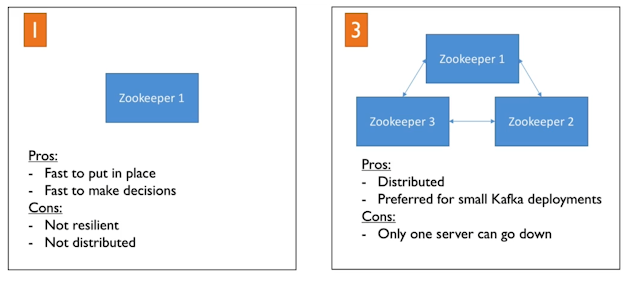1. Zookeeper configuration can be very tricky to optimize and really depends on how your Kafka cluster is formed, as well as your network environment
2. We are going to set the most common settings for Zookeeper and discuss some more advance settings
# the location to store the in-memory database snapshots and, unless specified otherwise, the transaction log of updates to the database.
dataDir=/data/zookeeper
# the port at which the clients will connect
clientPort=2181
# disable the per-ip limit on the number of connections since this is a non-production config
maxClientCnxns=0
# the basic time unit in milliseconds used by ZooKeeper. It is used to do heartbeats and the minimum session timeout will be twice the tickTime.
tickTime=2000
# The number of ticks that the initial synchronization phase can take
initLimit=10
# The number of ticks that can pass between
# sending a request and getting an acknowledgement
syncLimit=5
# zoo servers
# these hostnames such as `zookeeper-1` come from the /etc/hosts file
server.1=zookeeper1:2888:3888
server.2=zookeeper2:2888:3888
server.3=zookeeper3:2888:3888




